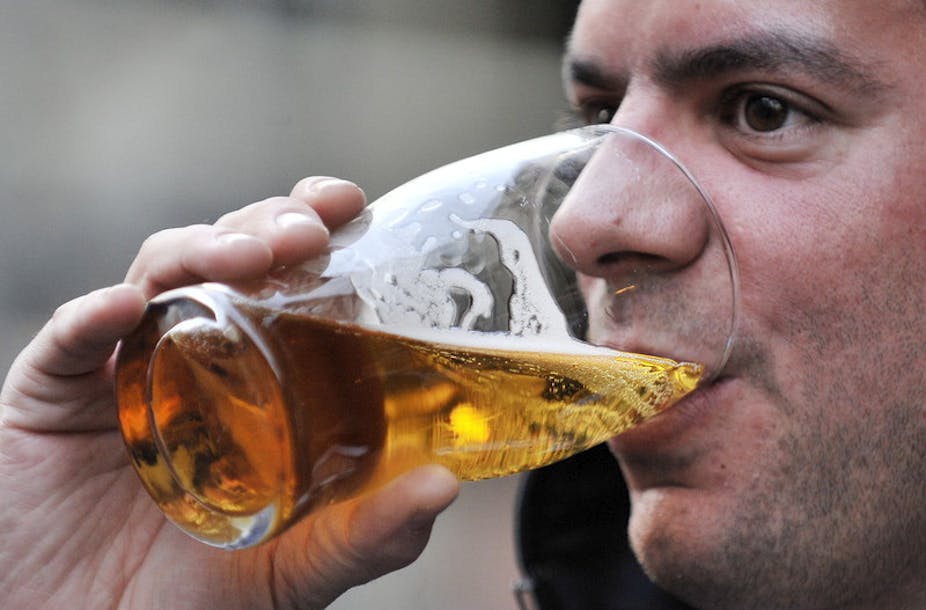Rarely a day passes without another horror story about the UK’s drinking problem: alcohol-related violence, debauchery in city centres, record demand on A&E resources, a liver disease epidemic and families wrecked by addiction. Criminologists, health professionals, sociologists and politicians appear on news programmes, pointing the finger at individual over-indulgence and calling for ever stricter measures: minimum pricing, tougher consumption guidelines, charging drunkards for medical help and restricted pub opening hours.
This is all very worthy and sensible, as the grave costs of alcohol abuse can be readily quantified. And yet, our approach to the problem is partial and (historically) short-sighted. The general public may be excused for believing that the situation has never been so bad, but similarly intense concerns have been voiced before. Today, one effective response might be to go beyond tighter controls and to bolster a time-honoured British institution: the pub.
Taking a long-term view, average drinking volume figures were actually much higher in the past, with at least 600 litres of ale or beer consumed per head each year on average in the Renaissance (as calculated from surviving household accounts), compared to a mere 74 litres in the UK in 2011. Given the question marks over alcohol volumes and data recording, such comparisons can never be precise, but the basic observation stands.

Rather than a unique crisis, what we are witnessing today is the latest of a series of moral panics which have gripped Europe since the Middle Ages, most notably in the Reformation period of the 16th century (spurred by religious fervour – no lesser figure than Martin Luther preached against the “piggish” excess of his compatriots), during the Enlightenment (boosted by a utilitarian concern about human health) and in the industrialisation of the Victorian age (out of fears for the destitution of the working classes). Invariably, the very foundations of society appeared to be at risk.
Social drinking
Two main features, I would argue, distinguish the current situation from historical precedents: the growth in individual domestic consumption and the greater visibility of heavy female drinking.
In pre-modern times before 1800, there were hardly any shops selling alcoholic beverages and drinking was above all a convivial activity. Much related research points to the “positive” social functions of sharing a pint: hardly a business deal and certainly no feast day passed without a gathering at the local alehouse. And during these feast days, as we can tell from the written and visual evidence, young and old people, men and women, rich and poor congregated in and around these communication hubs. Sole drinking, away from the public gaze, was frowned upon and excessive indulgence (especially when leading to violence) was subject to informal social control. There were many tensions, certainly, but the overall impression is of a problem contained.
Now we have large numbers of people drinking heavily at home, often alone and without any checks on volume or behaviour. The habit is facilitated by (not just cheap) booze stacked on supermarket shelves. In town centres, on the other hand, we see the unprecedented phenomenon of collective female drunkenness. In pre-modern times, women were expected to drink moderately, in line with period beliefs in their weaker physical constitution and social pressure to maintain their sexual honour. Such gender prejudices and inequalities have largely been consigned to the historical dustbin (although they persist in some quarters), but – from the point of view of alcohol studies – the apparent peer acceptability of heavy female consumption is a striking innovation.
Rather than being viewed as a cause of the problem, the pub should be seen as a solution. At current rates, dozens are disappearing every week, capitulating in the face of supermarket competition and an ever-growing range of leisure alternatives. Apart from home consumption, drinking has shifted to specialised, group-specific contexts like bars, clubs, parks and shopping malls.

Is it mere nostalgic romanticism to call for sustained efforts to stem this trend?
Instead of placing all our trust in government/coercive measures, we might just have to go to the pub more often, reclaim it as a socially inclusive space, bring our friends/business partners/relatives/kids and restore its historical role as a community centre. So, yes, let’s keep banging on about health hazards and social costs of excessive consumption, but we also need to remember that without a decent pub – this widely-recognised “icon of England” – no village or neighbourhood is likely to prosper.
Over the centuries, publicans have learnt to weather storms and adapt to changing demands, but today they really could do with a helping hand from responsible patrons.

